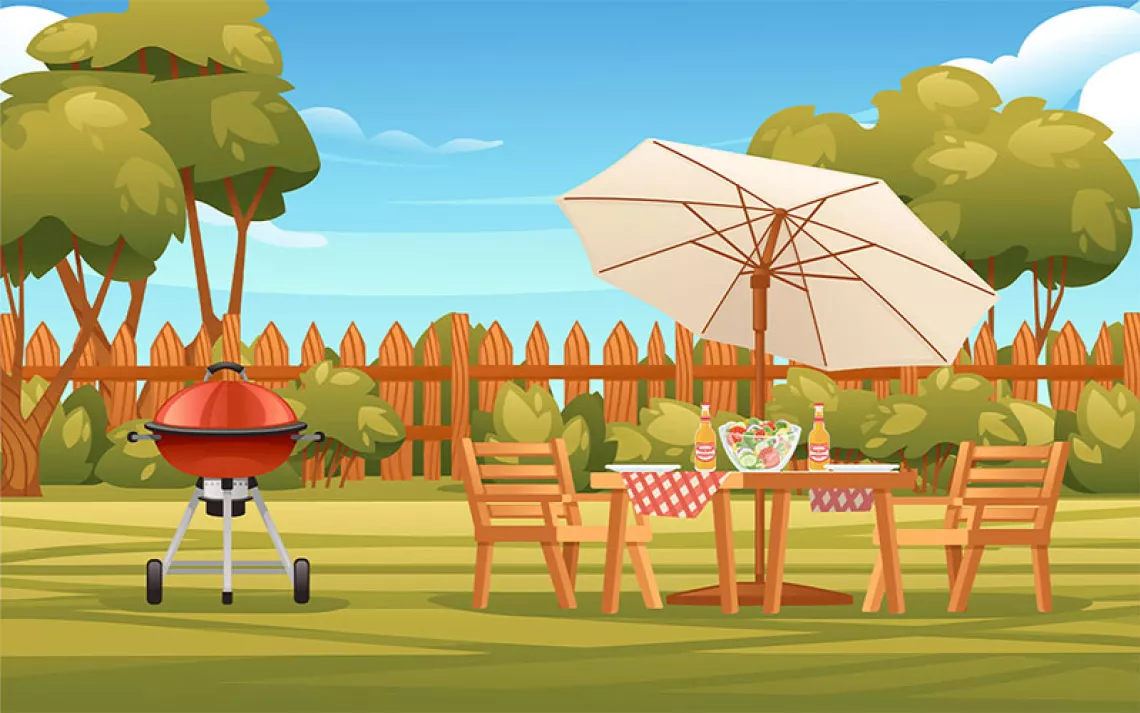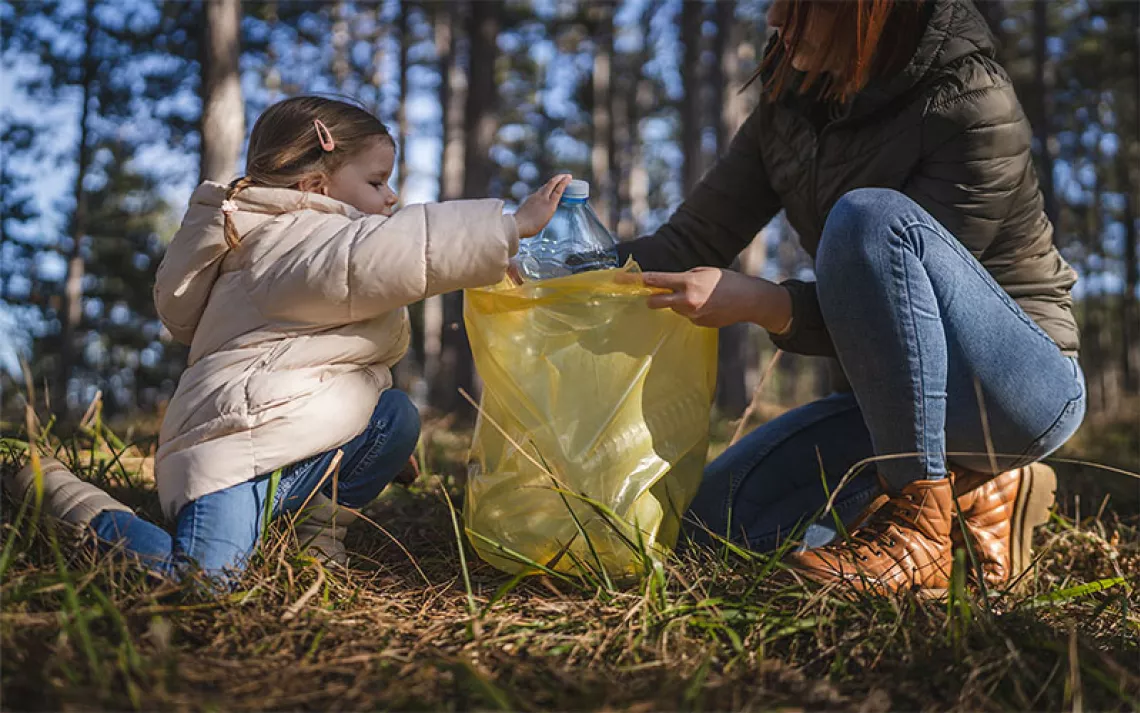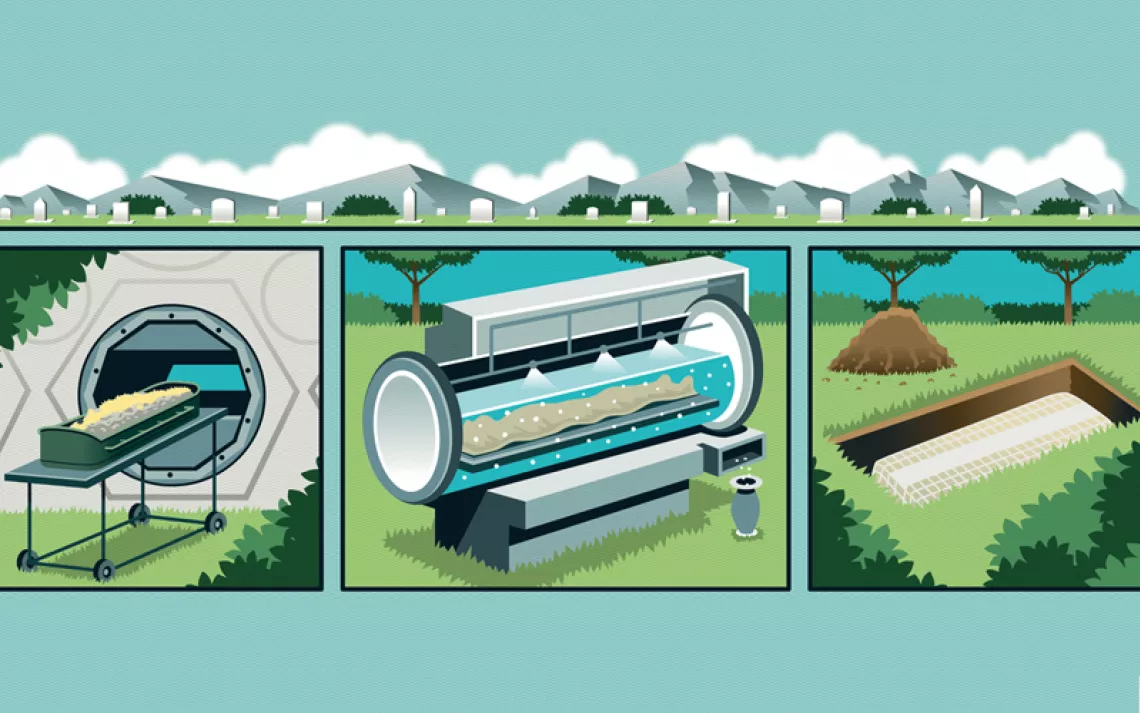How to Be Environmentally Conscious After Death

Photo by iStock.com/aniszewski
It's impossible to ignore feelings of veneration and kinship to the natural world when looking up at the seemingly infinite pinpricks of light scattered across boundless skies or when devoured by the still, wet air that lingers in the early morning hours.
Inspired by those feelings, we researched a handful of environmentally conscious end-of-life arrangements worth noting.
Connecting Life to Death
Promession, a method of ecological burial invented by biologist Susanne Wiigh-Mäsak, aims to create life out of death. An individual's remains are frozen with liquid nitrogen and vibrated until they shatter. The ash-like remains are then placed in a biodegradable coffin and buried shallowly. A shallow burial allows for a favorite tree or bush to be planted on top of the coffin. Over the course of six months to a year, the remains convert to soil, providing nutrients for the plant above.

Sign up to receive Sierra News & Views
Get articles like this one sent directly to your inbox weekly.
With this action you affirm you want to receive Sierra Club communications and may vote on policy designated by the Sierra Club Board.
Biocremation (or resomation) is a water-based method that reduces human remains to a fine white powder. The process involves the introduction of a base to mimic natural decomposition but at a faster rate. Energy required to heat the water is less than energy required for cremation and the high temperature of the water ensures that what goes down the drain is completely sterilized. Roughly 125 gallons of water are required per individual and the primary environmental concern is the pH and temperature of the water as it goes down the drain. Biocremation water regulations however, are dependent on the region's water municipality.
Eternal Reefs provides a service that helps restore endangered coral reefs while memorializing your loved one. By mixing concrete with an individual's remains, a cast is made that can support coral and wildlife, helping these struggling ecosystems survive.
Green Burials allow an individual's remains to recycle naturally. The Green Burial Council is a non-profit organization that has compiled resources for individuals looking to minimize their ecological impact after death. From biodegradable caskets to cemeteries that preserve natural habitats, the Green Burial Council provides a framework for understanding burial options while providing a level of transparency and focusing on ecological responsibility. The founder of Green Burial Council, John Sehee, believes that green burials emphasize the connectivity of life and death. For families, solace can be found in the simplicity and sustainability of a green burial, Sehee said.
About the Traditional
Dead body in morgue with toe tagCremation was once the environmentally sustainable way of honoring the dead. It saves virgin lands from development, is maintenance-free (no cemetery watering or mowing), and there is no need for an expensive casket or the steel and concrete vaults they inhabit. However, the cremation process releases several pollutants into the air, including CO2. As of 2011, the Cremation Association of North America reported that 42% of all deaths in the United States undergo cremation annually. As open lands are replaced with bisecting streets of asphalt to accommodate the growing population and its lust for urbanization, this percentage is expected to reach 49% by 2016 and continue rising.
Embalming involves a variety of chemicals and high rates of cancer among embalmers have been linked to the use of formaldehyde. Safer embalming chemicals are being made (there is even one made of non-toxic, plant essential oils) and used in certain funeral homes.
 The Magazine of The Sierra Club
The Magazine of The Sierra Club



